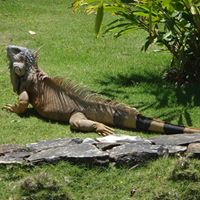The Orinoco River is one of the largest rivers on which continent?
The Orinoco River is one of the longest rivers in South America at 2,140 kilometres (1,330 mi). Its drainage basin, sometimes known as the Orinoquia, covers 880,000 square kilometres (340,000 sq mi), with 76.3 percent of it in Venezuela and the remainder in Colombia. It is the fourth largest river in the world by discharge volume of water. The Orinoco River and its tributaries are the major transportation system for eastern and interior Venezuela and the llanos of Colombia. The environment in the Orinoco's basin is extremely diverse; it hosts a wide variety of flora and fauna.
The mouth of the Orinoco River at the Atlantic Ocean was documented by Columbus on 1 August 1498, during his third voyage. Its source at the Cerro Delgado – Chalbaud, in the Parima range, was not explored until 1951, 453 years later. The source, near the Venezuelan – Brazilian border, at 1,047 metres (3,435 ft) above sea level (2°19′05″N 63°21′42″W), was explored in 1951 by a joint Venezuelan – French team.
More Info:
en.wikipedia.org


